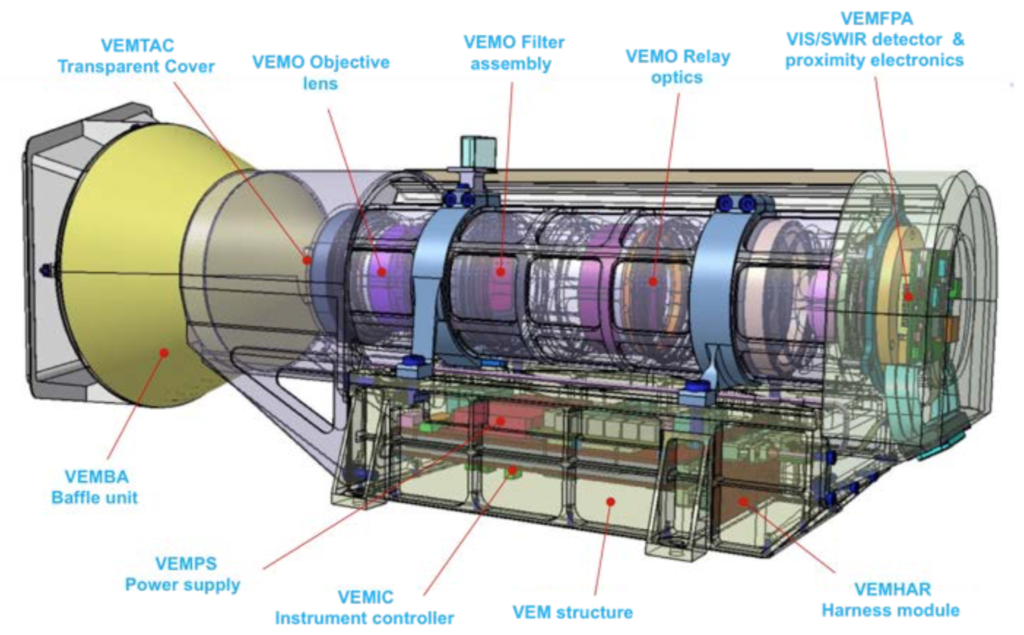VenSpec-M
Instrument Lead Scientist (ILS): Giulia Alemanno (DLR, Berlin, Germany)
VenSpec-M will use the methodology pioneered by VIRTIS on Venus Express but with more and wider spectral bands, the VenSAR-derived DEM, and EnVision’s circular orbit to deliver near-global multichannel spectroscopy with wider spectral coverage and an order of magnitude improvement in sensitivity. It will obtain repeated imagery of surface thermal emission, constraining current rates of volcanic activity following earlier observations from Venus Express.
Observations from VIRTIS have revealed surface emissivity variations correlated with geological features, but existing data sets contain only three spectral channels. VenSpec-M is optimized to map the surface composition and texture, and to search for active volcanism using the narrow atmospheric windows, building on lessons from prior instrumentation and methodology. It offers an opportunity to gain important information about surface mineralogy and texture by virtue of having six different channels for surface mapping. This investigation is also based on high temperature laboratory experiments currently performed at the Planetary Spectroscopy Laboratory in DLR Berlin.
VenSpec is focused mainly on observing the surface, mapping in all near-IR atmospheric windows using filters with spectral characteristics optimized for the wavelengths and widths of those windows. It offers an opportunity to gain important information about surface mineralogy and texture by virtue of having six different channels for surface mapping. It also observes bands necessary for correcting atmospheric effects; these bands also provide valuable scientific data on composition as well as altitude and size distribution of the cloud particles, and on H2O vapor abundance variations in the lowest 15 km of the atmosphere.
VenSpec-M description
The VenSpec-M optics has a field of view (FOV) of 45°, equivalent to 307 km from the nominal orbit altitude. Each pixel resolves 0·07° × 0·07° (303 m), which with an integration time of 90 ms, leads to pixel dimension of 303 m across and 1000 m along track. Each ultra-narrow- band filter (made by Materion) occupies 33 of the 640 pixels across track; these are binned along and across track into 10 × 10 km cells at the top of the clouds (for cloud correction) and 60 × 60 km cells at the surface, providing a SNR of at least 300 for the cloud correction band at <1·5 μm and >500 forthe mineralogical bands. This approach provides contiguous spectral emissivity coverage with the 10 km orbit advance.
VenSpec-M heritage
VenSpec-M low development risk results from a standard camera optical design, a flight proven InGaAs detector with a thermo-electric cooler, and flight-qualified support systems from MERTIS onboard BepiColombo.








































 Sign in
Sign in
 Science & Technology
Science & Technology
